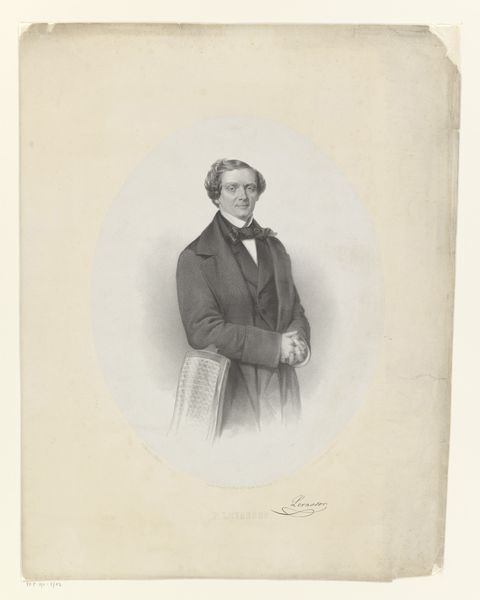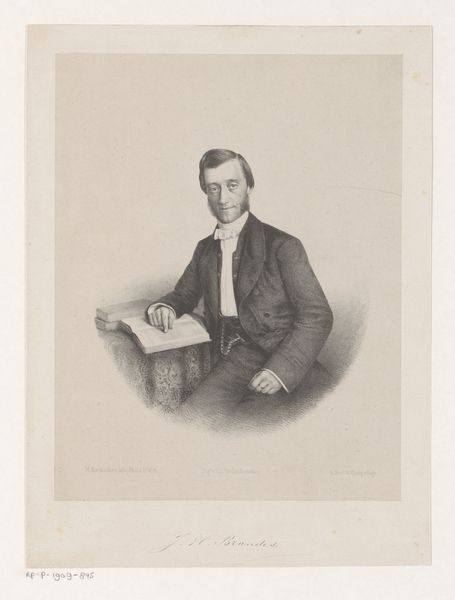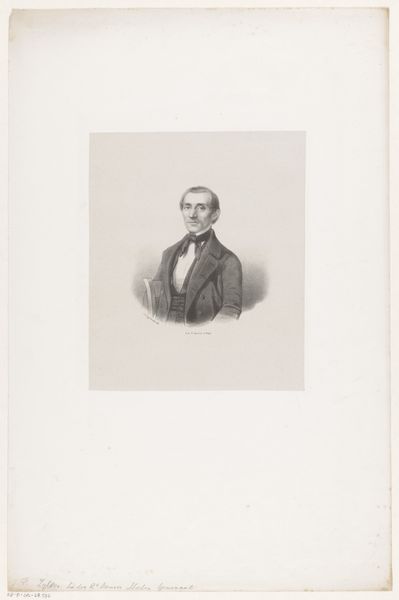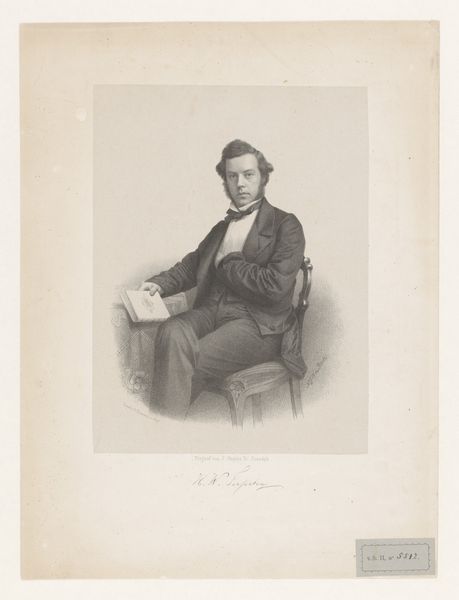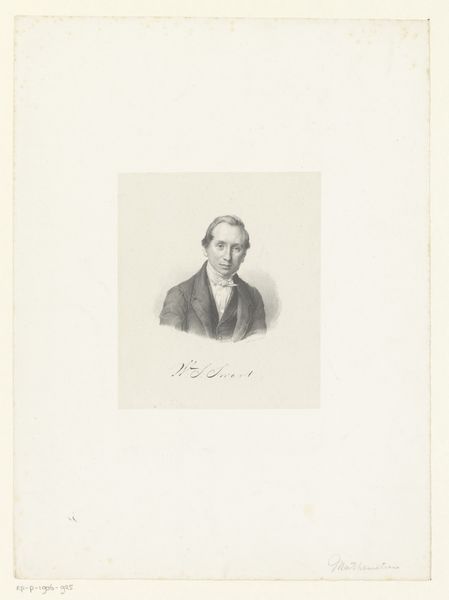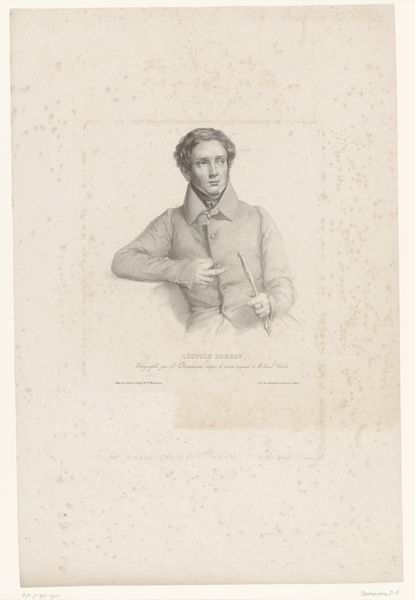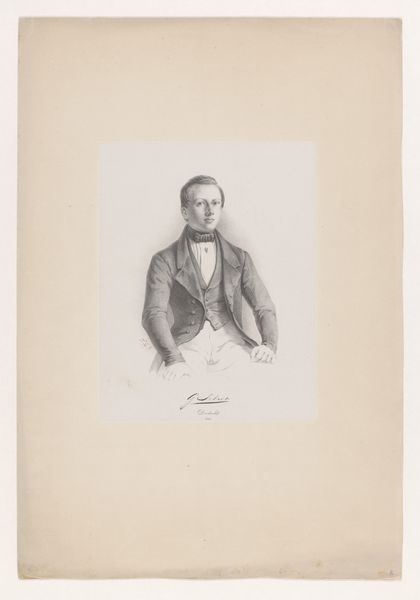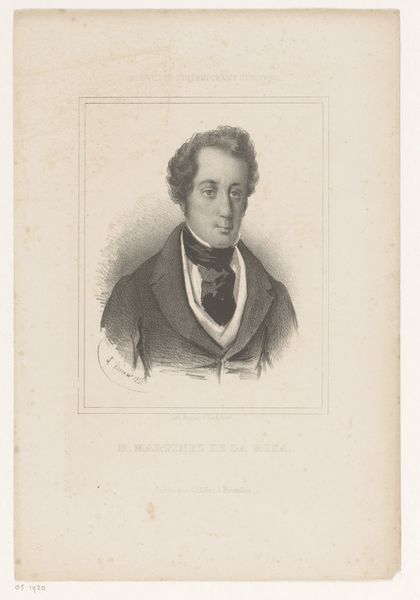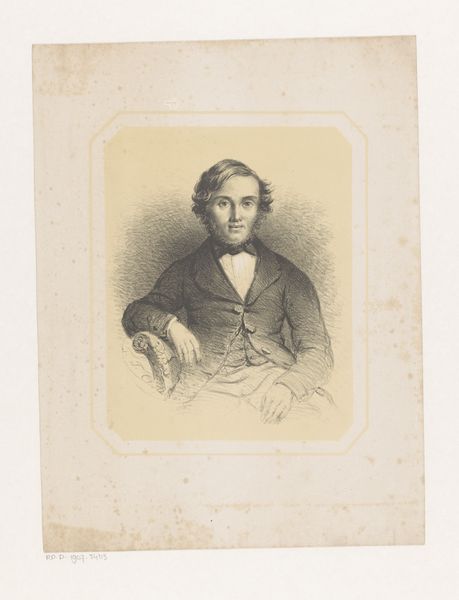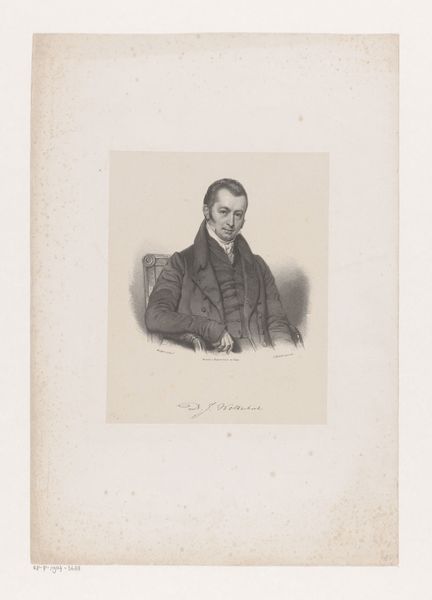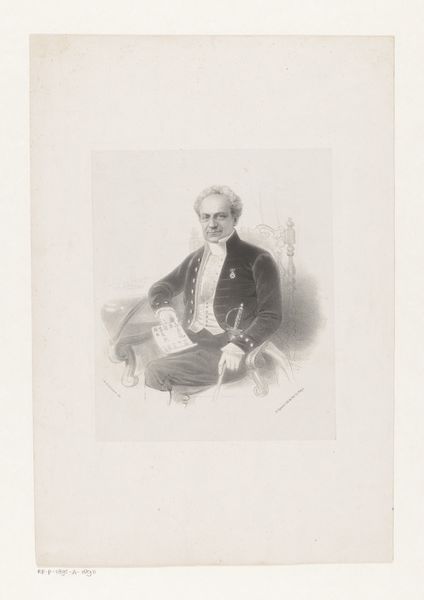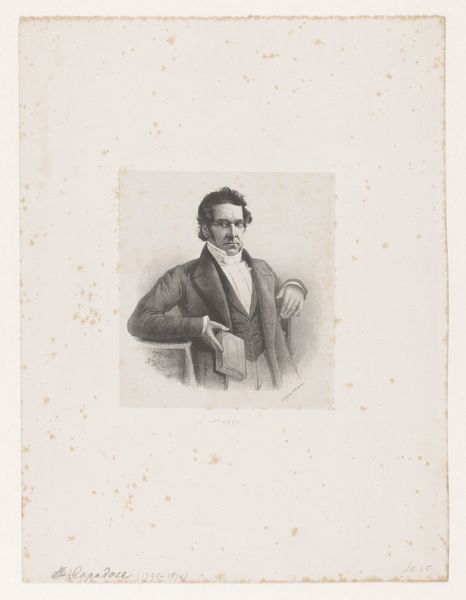
Portret van een onbekende man, mogelijk Jean Antoine Bakhoven c. 1842 - 1880
0:00
0:00
Dimensions: height 490 mm, width 355 mm
Copyright: Rijks Museum: Open Domain
Pieter van de Weijer created this portrait of an unknown man, possibly Jean Antoine Bakhoven, using lithography. This printmaking technique involves drawing on a flat stone with a greasy crayon, then treating the stone so that ink adheres only to the drawn areas. It was a revolutionary process, enabling the relatively quick and inexpensive reproduction of images. Note how the lithographic process lends itself well to capturing the textures of the sitter’s clothing and hair, as well as the subtle gradations of light and shadow that define his features. The rise of lithography in the 19th century democratized image-making, making portraits like this accessible to a broader segment of society. No longer solely the domain of the wealthy, portraiture became a means for the middle class to assert their identity and status. In this context, the lithograph serves not only as a depiction of an individual, but also as a reflection of shifting social and economic landscapes, highlighting the intersection of art, labor, and commerce.
Comments
No comments
Be the first to comment and join the conversation on the ultimate creative platform.
